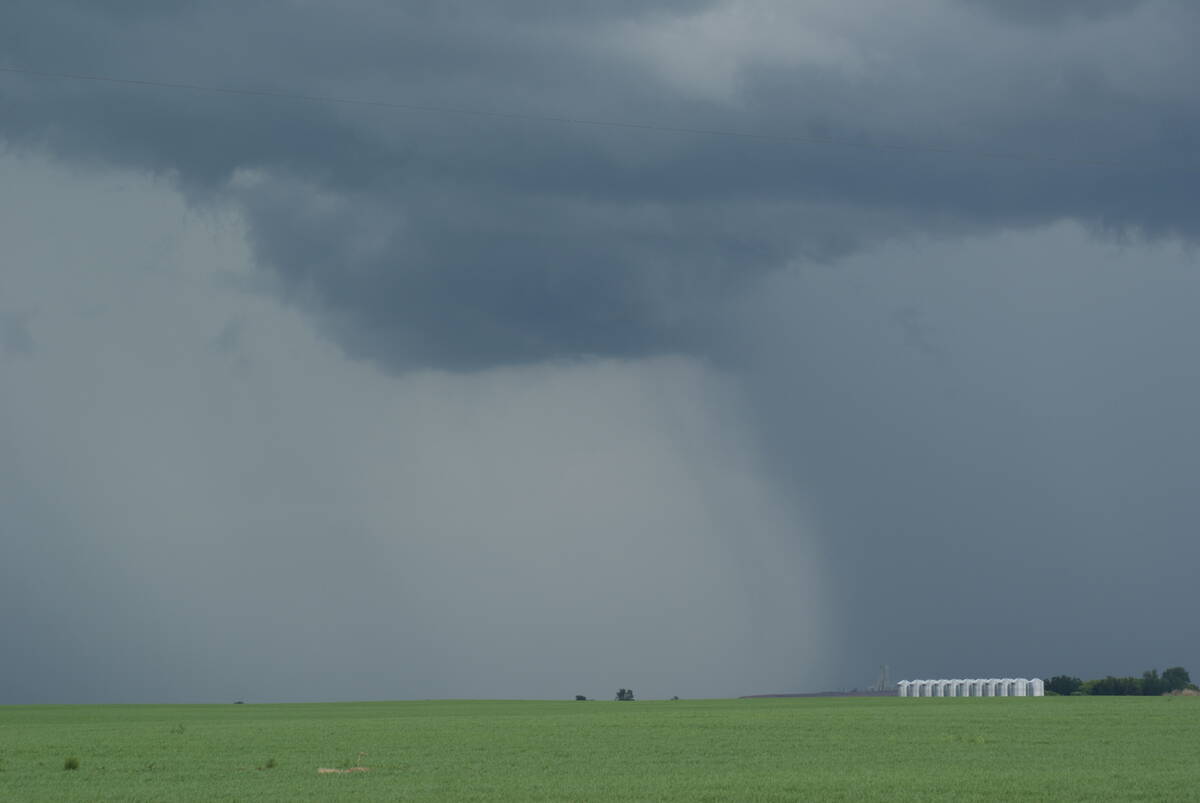Three metabolic conditions — milk fever (low calcium), hypophosphatemia (low phosphorus) and grass tetany (magnesium deficiency) — are similar.
Phosphorus and calcium deficiencies commonly occur just before, at or slightly after calving.
Grass tetany usually occurs when cattle are grazing lush grass and is often associated with a stress such as a weather change. Magnesium levels in the fast growing grass fall and the animal becomes deficient.
The demand for calcium is greatest at calving. There is an outpouring of calcium in the mother’s milk and a downer will result if bloodstream levels become too low.
Read Also

Canadian farmers need new tools to support on-farm innovation
Farmers need a risk management buffer that actually works and investment that drives advancements forward if Canada is to build resilience.
I usually see primary milk fevers in heavy milking beef cattle such as Simmentals and Shorthorns.
The cattle that develop the problem will almost always be full or cross
Simmentals or Shorthorns or a dairy cross. These deficiencies can occur before or after calving in beef cattle, but most happen around calving time.
Producers often misdiagnose because calcium deficiencies are uncommon and may start treating for something else. It is best to get your herd veterinarian involved because a downer cow usually needs a bolus of calcium intravenously. The vet will often give another bottle under the skin for slower absorption.
Anti-inflammatories and selenium are other treatment possibilities if an animal has been struggling to get up.
The vet will make sure other ailments aren’t affecting the cow, such as mastitis, metritis or obturator paralysis. It is often possible two conditions are going on at the same time and both may need to be treated.
The veterinarian will often review your mineral program to make sure adequate trace minerals are being supplied.
Forages are generally higher in calcium and lower in phosphorus. Grains are the reverse — high in phosphorus and low in calcium.
Phosphorus deficiencies are treated much the same way as milk fevers. Calcium products often also contain phosphorus. Extra phosphorus may also be given.
I often call phosphorus-deficient cows creeper cows. They often sit up bright and alert and can almost rise but simply can’t get their back legs fully extended. Response to treatment is slower and not as dramatic as milk fever cows, which rise and walk off after treatment.
Many clinics have in-house lab facilities and can test calcium, phosphorus and magnesium levels in the blood to identify the main deficiency or determine if there is a combined deficiency.
The response is good and recovery is complete if calcium and phosphorus deficiencies are treated quickly before muscle and nerve damage has occurred from being down too long.
Magnesium deficiency, or grass tetany, occurs primarily when grass is lush. Animals have often just been rotated into a new pasture and there has been some sort of stresser such as a rainstorm or feed deprivation.
This problem is worse in some regions, and veterinarians may order minerals with higher than normal levels of magnesium. Magnesium oxide may be added to the regular mineral package in cases of an outbreak.
The initial signs of grass tetany are neurological such as staggering and irregular behaviour. The animal then collapses and goes into rigid tetanic convulsive fits. Response is good if signs are caught early and cattle treated as they go down or just before. Response is poor once they have been down for a while.
Blood is usually drawn to confirm the diagnosis. This is done before treatment because results are altered immediately once the product is run into the bloodstream.
Certain treatments are cocktails of magnesium, calcium and phosphorus that cover all bases. The vet will listen to the heart when administering the product because missed beats and heart arrhythmias can occur if the product is given too fast.
An animal that dies from grass tetany can be tested for BSE if it is the right age because it falls under the neurological category.
BSE surveillance needs cattle to test to demonstrate the low and declining level of BSE in the national herd.
Most metabolic downer conditions in cattle can be treated successfully.
They may point to a herd mineral problem, so it is worth checking your mineral program to prevent additional cases. Involve your veterinarian because they also need to rule out other diseases that look similar.
Roy Lewis is a veterinarian practising in Westlock, Alta.














